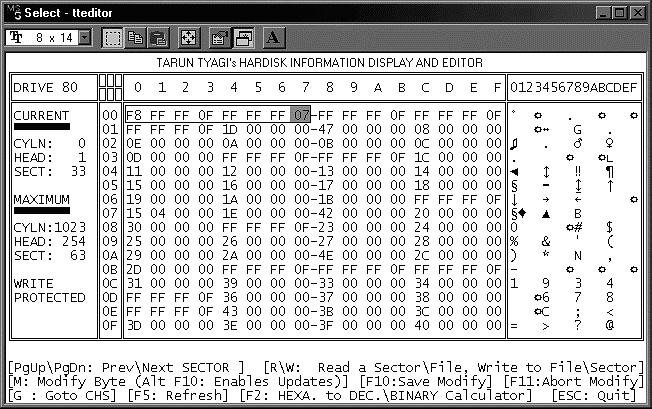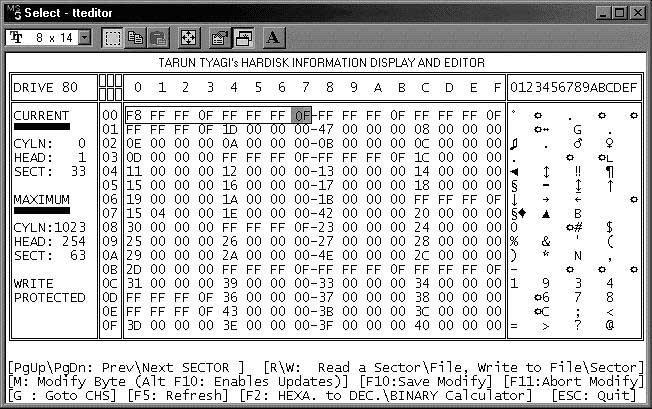How Windows detects the Improper – Shutdown
It is very common thing and I hope you have noticed it many times when using windows that if there is any Improperly – Shutdown in your computer, due to any reason like, power failure, software corruption, accidental shutdown etc, when you further restart your computer, the message of Improper – Shutdown is displayed on the screen during the booting process and the Operating System Scans the disk for errors.
The next two figures show the 256 Bytes of the beginning of a 32 – Bit FAT however we only need initial 8 bytes to discuss this.
Actually, when the Windows Operating Systems has loaded itself into Memory i.e. the Windows has started, the 8th Byte (or offset 7H) of FAT becomes 07H or F7H from 0FH or FFH.
Microsoft uses the byte 0FH only for the volume that contains the running Operating System, and the byte FFH for any other volume that it is accessing.
Once Windows starts booting, the 8th Byte is changed to 07H or F7H which will be set back to a 0FH or FFH only if Windows is properly shut down.
If there is a power failure, or the Power switch of the computer is accidentally turned OFF or the system is manually rebooted due to some software problem, then this byte will remain as 07H or F7H which informs the Windows Operating System when next time it is booted that there was some kind of improper shut down and then Windows uses it’s disk scanning program (Scandisk) to verify the disk for errors.


|


